You didn't think I'd forget, did you? Even as I recover from the previous day's festivities here on Boxing Day (why didn't I sit on the Seconds Out ST-urday until today?) I still have a commitment to this feature. Except, well, after today, it will no longer be a thing. I've brought it up a few times now, but the intent of this feature was to highlight some Atari ST games using my own gaming history as both a launching point and as a means to bring a lot of enthusiasm for what are, admittedly, some inferior ports of Arcade action games and versions of proto-PC games that probably have better revamped versions on GOG. The Atari ST and Amiga were important intermediate steps in the evolution of PC gaming, having been the "in" thing shortly before PCs and Windows all but took over that space with only the scrappy generational Apple Macintosh hanging in there as a weak rival until it finally got its time in the spotlight. All the same, though, I can't really muster the same slavish devotion to games that I don't have that nostalgic base for, and now that my list of owned Atari ST games is beginning to thin out with only the big names and dregs remaining, it's probably time to move onto something else. I have some PC Engine features in the pipeline, for one, and I'll try to pry myself away from all these enormous open-world PS4 games to write something about them soon as well.
Speaking of which, I hope you all had a Merry Christmas and/or Happy Holidays. I suppose it's just "Happy New Year" left at this point, and January brings the promise of the 2016 New Year's No-Laughing Batsu Game from Downtown no Gaki to Tsukai (worth tracking those down, if you've not seen one before) and a new Awesome Games Done Quick charity speedrunning event on the 3rd. Naturally, more AGDQ speed-runs means more of me frantically ensuring we have pages for all the games featured just in case the Twitch stream of the event runs into database issues. There might be a little bit of clean-up work as well, as even the busiest and most popular pages tend to see their share of irksome 2nd-person style errors and typos, but the primary goal is to ensure that obscurities like Utsurun Desu.: Kawauso Hawaii e Iku are accounted for in our wiki. It's a good thing I'll have hours and hours of Giant Bomb GOTY podcasts to listen to as I work on them, then.
Meanwhile, through both the largesse of my family and friends and my own monetary indiscretions, I'll be playing (and thus hopefully writing about) the following for this and probably the next three months at least: Fallout 4, Bloodborne, Assassin's Creed: Syndicate, The Witcher 3, Middle-earth: The Shadow of Mordor and, as was probably inevitable, Metal Gear Solid V: The Phantom Pain. It's just as well that I cancelled my cards after that Steam furor: I daren't spend any more. I'll just live off leftover turkey and Christmas tree decorations (and not necessarily the chocolate ones) until my bank account recovers.
A Classic Capcom ChriSTmas
It's the ST-urday finale, so let's do something big: Five Capcom Arcade conversions for the Atari ST. I've chosen five of Capcom's lesser known titles that generally saw fewer adaptations, skipping the likes of big-name titles such as Final Fight, Street Fighter II, Strider or Ghosts 'N Goblins, and we'll briefly go over each one's history and the quality of its Atari ST adaptation. I spoke earlier about the Atari ST's Arcade ports and their variable quality, but Capcom usually made an effort to ensure that their games and customers weren't burned by third-party contract developers brought in to adapt their flashy CP System-1 Arcade games to a more accommodating format for the less powerful home systems. I suspect that all came about due to the fallout of the dubious quality of the very first Capcom NES ports, which were handled by the notoriously poor contract developers Micronics. After that, Capcom frequently took the reins for ports themselves, and we have a string of console/computer classics from the developer that hasn't abated since (though they sure don't do much these days...).
Dynasty Wars
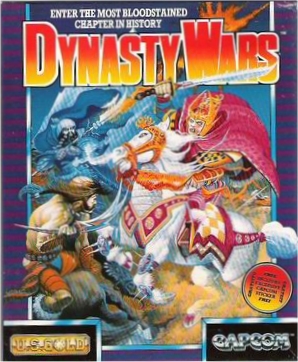
Years before Koei's Dynasty Warriors action-strategy series - but years after their first Romance of the Three Kingdoms strategy sim - Capcom produced the similarly-titled Dynasty Wars set during the tumultuous Three Kingdoms Era of Ancient China. Specifically, the game is based on the 1980s manga Tenchi wo Kurai ("The Devouring of Heaven and Earth") that depicts the struggle between the Huang Ching (a.k.a. Yellow Turban Rebellion, the event that seems to trigger the first battle of every Dynasty Warriors game) and four of the mighty warriors and generals sent to destroy both the rebellion and later the tyrannical aristocrat turned Han Dynasty usurper Dong Zhuo: perennial good guy favorite Liu Bei, his sworn brother for life and mythical badass Guan Yu, other sworn brother for life and boozy berserker Zhang Fei, and the spear-wielding pretty boy Zhao Yun.
Dynasty Wars is almost precisely what you'd expect a Romance of the Three Kingdoms Capcom Arcade brawler to be, though there's some nuance that befits the setting and the war-like nature of the protagonists' conflicts. It's not like the Shu faction went around inner-cities clearing out hoodlums and finding chickens in garbage cans: there were at least a few steps taken towards historical accuracy.
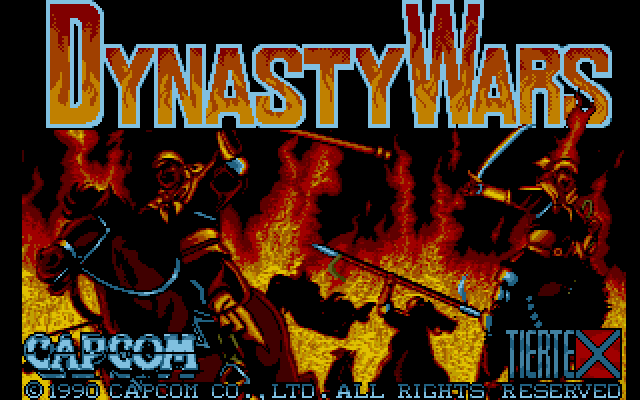
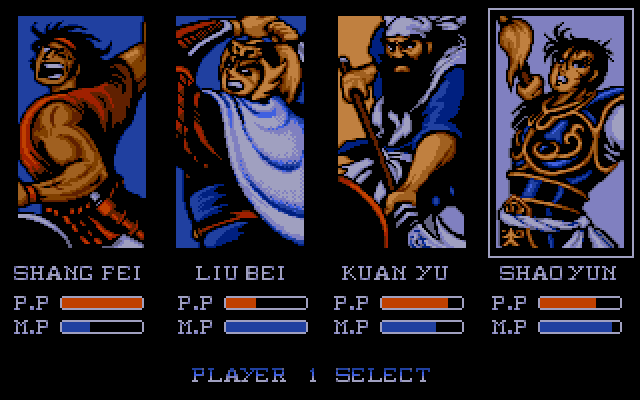
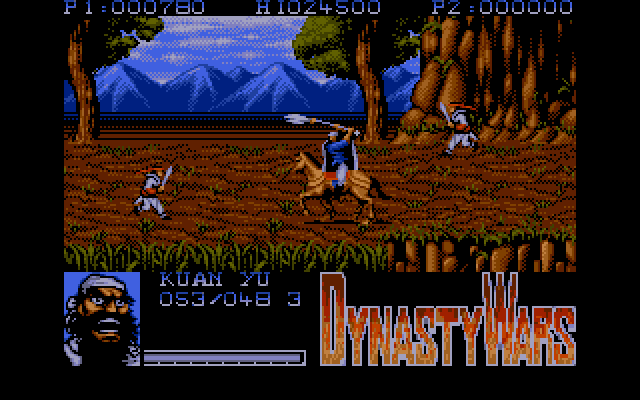
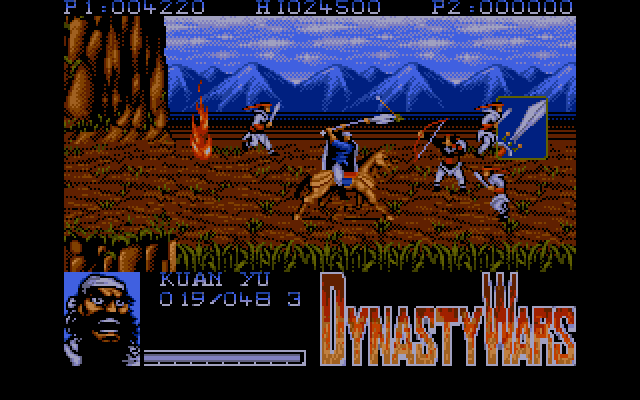
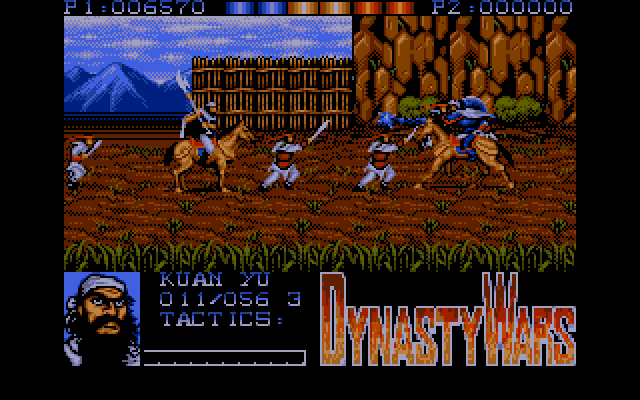
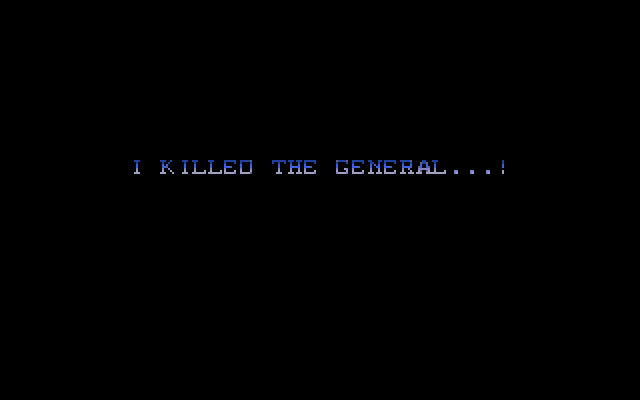
Last Duel: Inter Planet War 2012
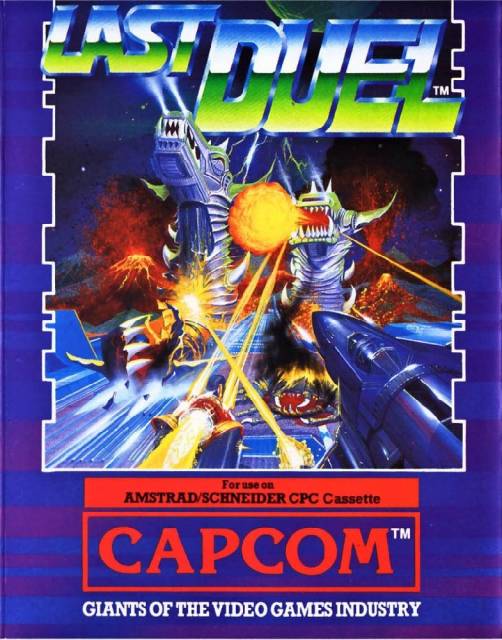
From Ancient China to the far-flung future of 2012, Last Duel: Inter Planet War 2012 is an Arcade game distinct on this list because it saw no other adaptations besides this home computer version courtesy of Tiertex and US Gold. Well, excepting perhaps the emulated Arcade version that was later made available on the PS2 and Xbox via a Capcom compilation.
A vertically-scrolling shoot 'em up from 1988, it shares a few similarities to Xenon: that shoot 'em up from The Bitmap Brothers that I covered a little while back along with its sequel. The player is in a fast-moving car that occasionally turns into a spaceship, and while in the car mode they have to be alert for ground obstacles as well as enemies. It's also fiendishly difficult, and the ST version apparently didn't compensate for how much of a quarter-muncher the original was so it was all I could do to make it to the first boss before spectacularly crashing and burning. Then again, I do suck at shoot 'em ups.
The story's great too, if only in the sense that it's the plot to every shoot 'em up ever: The citizens of the planet Mu are suddenly conquered one day by the warlike Galden tribe of the neighboring planet Bacula. They capture Mu's monarch Queen Sheeta, who must be Sheeting bricks, and it's down to one guy in his transforming hovercar to repel the Galden hordes and rescue the Queen. Just goes to show: when you live next to planet Bacula, there's no getting away scot-free.
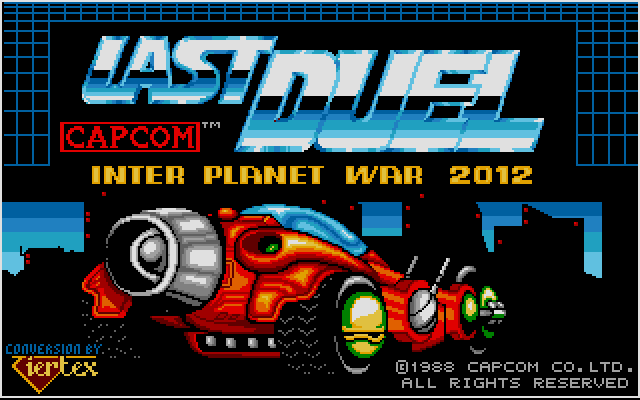
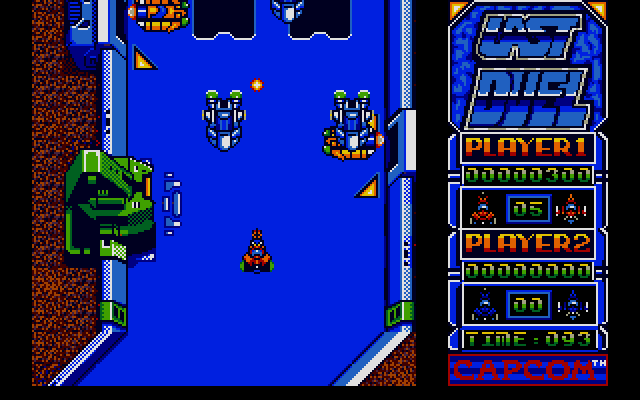
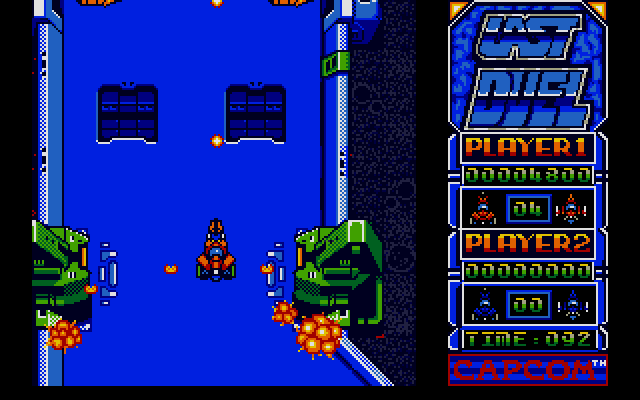
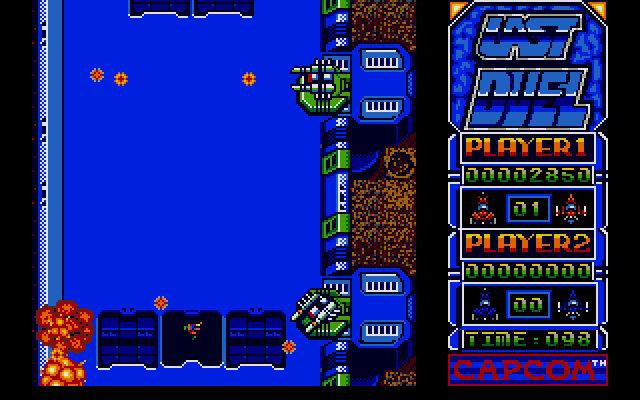
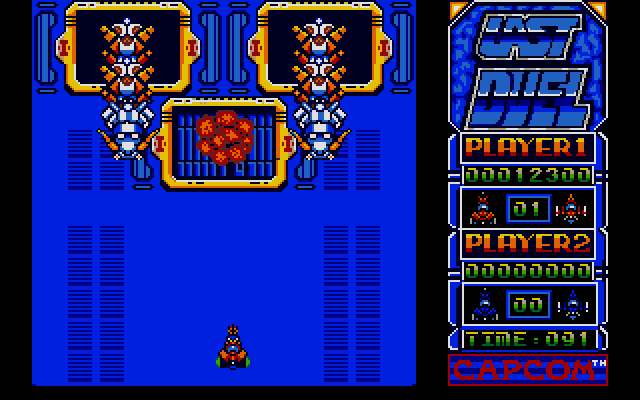
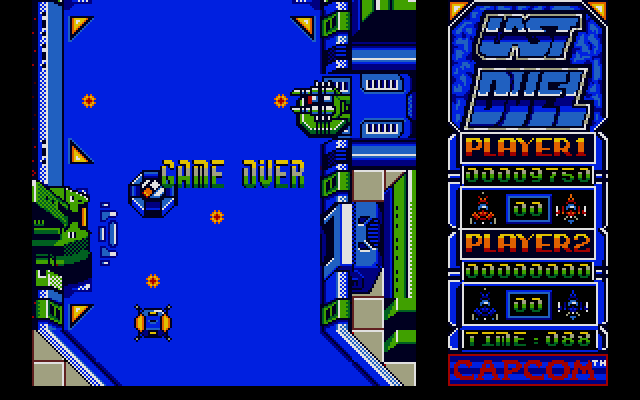
Mega Twins
Mega Twins is better known, to its possible chagrin, as Chiki Chiki Boys. That's its original Arcade name and what it was called for its worldwide Sega Genesis/Mega Drive release, at least. That version came out in 1992 and is graphically superior to this 1990 home computer port, but it also dropped the two-player mode for whatever reason. Mega Twins was Capcom's answer to Sega (and Westone)'s Wonder Boy series and to Wonder Boy in Monster Land specifically: both are side-scrolling action platformers with mild RPG mechanics and a goofy little protagonist in a diaper who doesn't know how to hold a sword correctly. With Mega Twins specifically, there's two of them. There's a few more additions too, since this was building on the Wonder Boy series rather than aping it.
I suppose the curious thing is why a game that was called Mega Twins for its US/EU Amiga and Atari ST release was not also called the same for its Mega Drive version, when it has Mega right there in the title for all that wonderful brand synergy. Capcom sure makes some mysterious decisions. Maybe the Mega Twin was the working title of the Sega Genesis CDX?
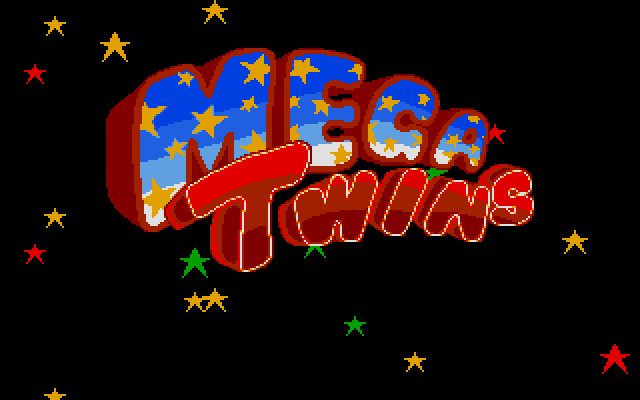
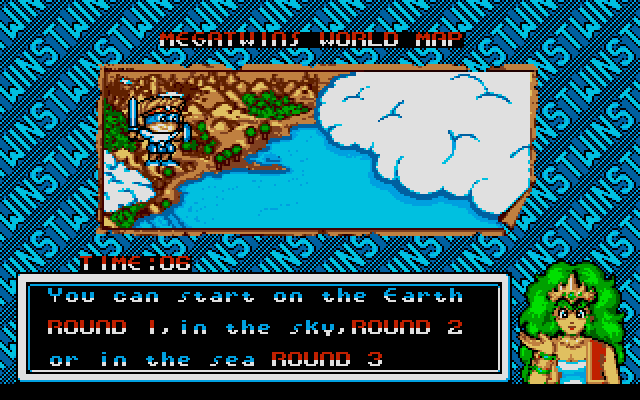
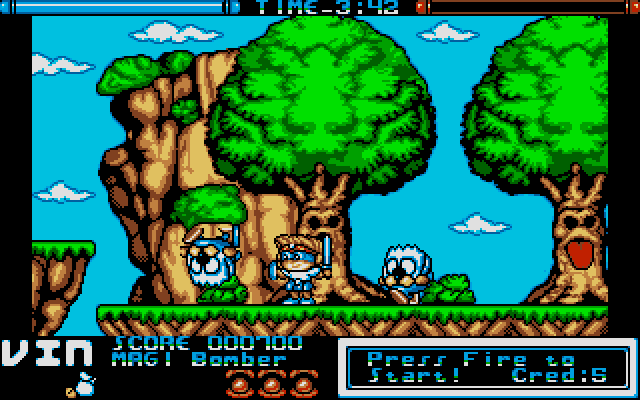
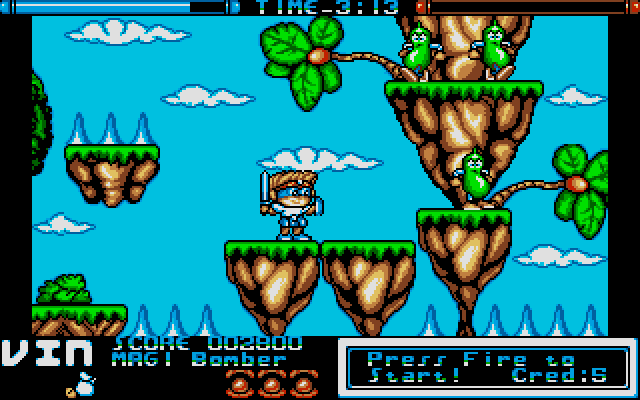
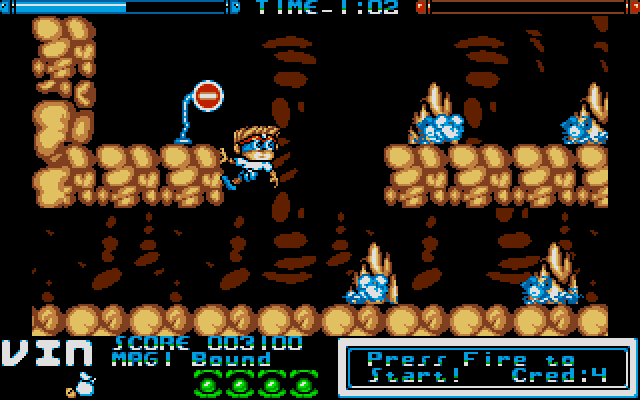
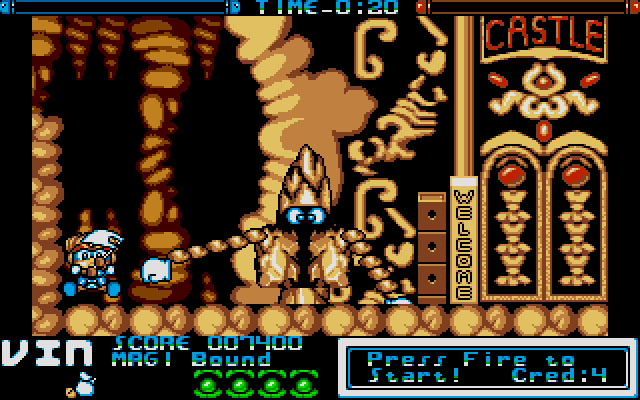
Pang
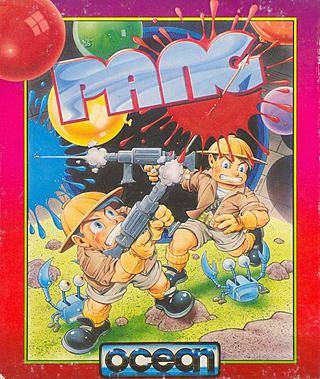
Best known in the US as Buster Bros., Pang is everyone's favorite onomatopoeic balloon-shooter. One of those games that seemed ubiquitous in the Arcades for a very small window of time between the age of brawlers and the age of fighters, the goal of Pang is to remove every balloon on the screen by shooting them with a grapple hook. The twist? The player could only aim up, while the balloons bounced from side to side. Not only was it challenging to time the hook shots so that the balloon would hit them before the hook hit the top of the screen and vanished, but it was exacerbated further by the fact that player contact with the balloons was deadly. Pang saw a great many home versions, but most - including the 1992 SNES port Super Buster Bros., which was actually the sequel/remake, and the 1997 Buster Bros Collection for PlayStation - came many years after the Arcade original. The home computer version was the only conversion close to launch for us westerners (Japan, meanwhile, saw a decent PC Engine CD version in 1991, which would eventually be released in the US in 1993. Why they gotta make us wait so long for a decent home version?).
Pang is technically the product of the Mitchell Corporation, no relation to Jon Don Baker's famous MST3K-bait detective, but was distributed everywhere by Capcom to the extent that it's essentially part of their oeuvre. Capcom didn't often take on publishing duties for other developers, so they're all one big happy family over there. It's also worth noting that this is the only game on this list of five that didn't come to us courtesy of U.S. Gold and their developer cohort Tiertex Design Studios. Rather, UK publishing powerhouse Ocean Software distributed this one for home computers.
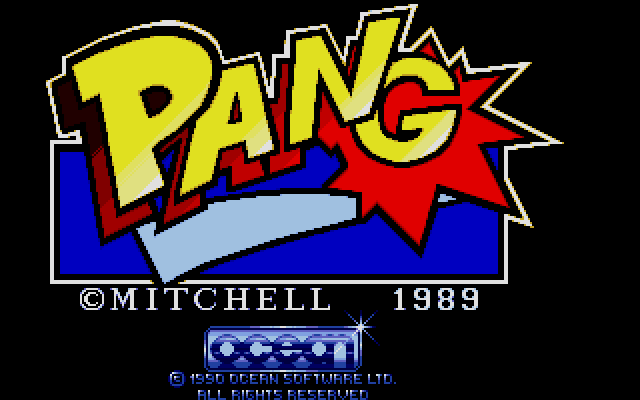
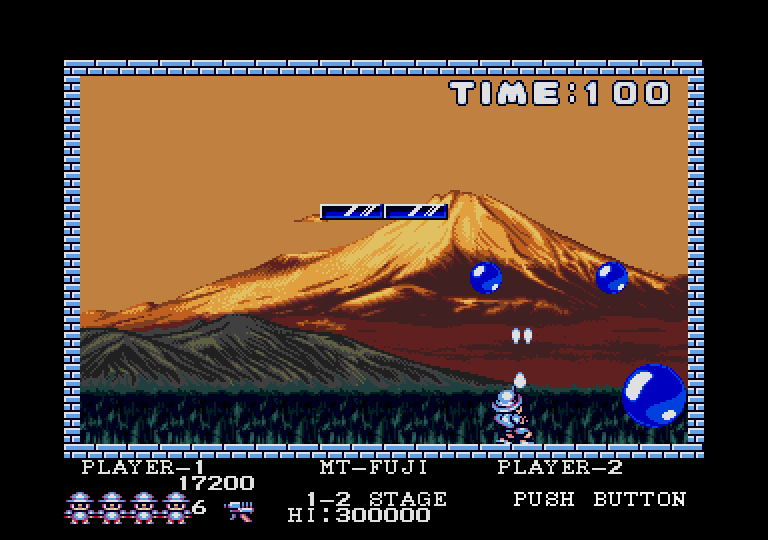
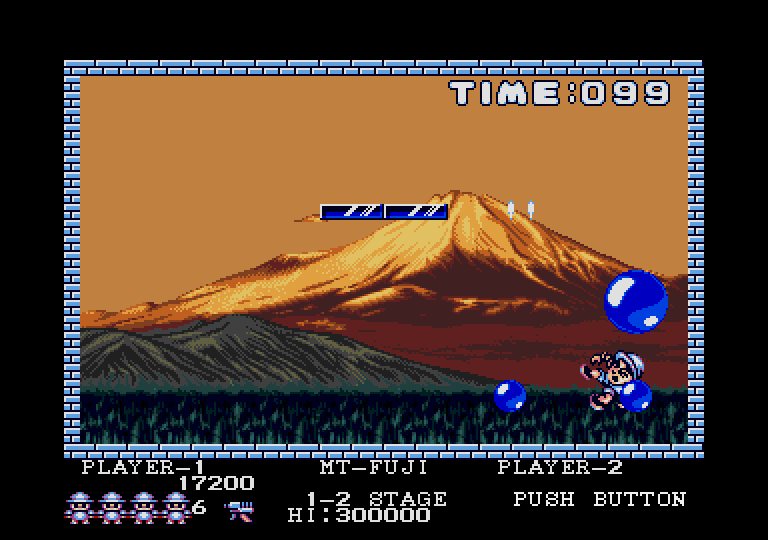
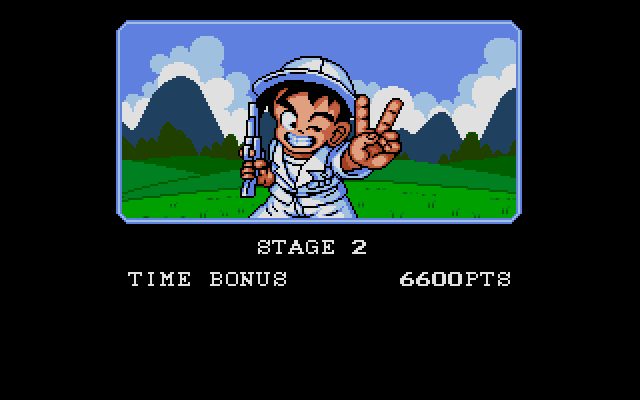
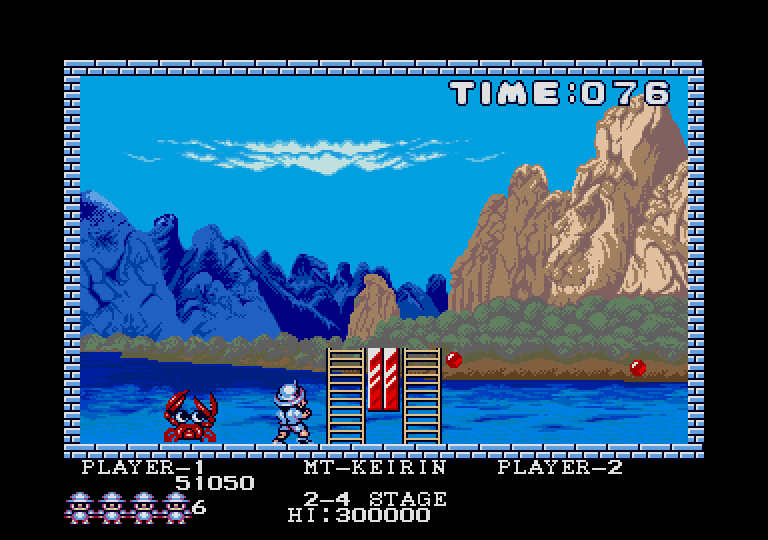
U.N. Squadron
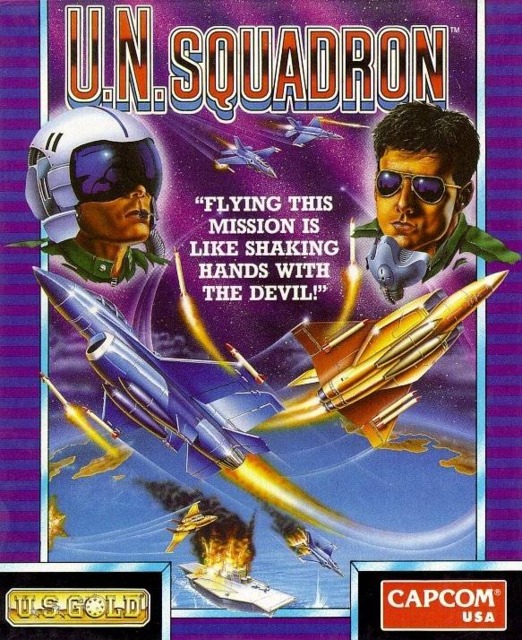
Our final game today is one best known for a singular port: the early-in-the-console's-lifespan SNES version. U.N. Squadron, a.k.a. Area 88, is a very busy Arcade game that really doesn't work as well on a home computer of limited processing power. Not only is it fast, but it is very busy, having many enemies and bullets on the screen at once. The Atari ST version struggles to fit everything in, and it feels like the playing field is greatly reduced to compensate for this. It still chugs along at an abominable frame-rate too. Absolutely get the SNES version if you're looking for a home version of this game, though I don't doubt that there means to get an Arcade-perfect version these days too. If Capcom's good at anything, it's rereleasing their own content a lot. While the box art goes for a pseudo-realistic military style (is that Jeff Gerstmann on the right? Someone update the doppelganger thread!), the ST version still retains the very anime pilots of the Arcade version. I guess switching them out for something more "western" would've taken too much work.
U.N. Squadron is a side-scrolling shoot 'em up with an overarching plot and mission directives that makes it feel like a Top Gun-style action movie, or maybe something like a proto-Star Fox without the polygons. You have priority targets to aim for each mission and a portrait of your pilot as they react to damage and other events occurring on the screen. It nails an atmosphere of cinematic excitement that few other shoot 'em ups did, at least not until they started becoming super fast and super nuts with their projectile-avoiding. Unfortunately for U.N Squadron Aero Fighters 2 has a dolphin pilot, so I guess they won the anime pilot war.
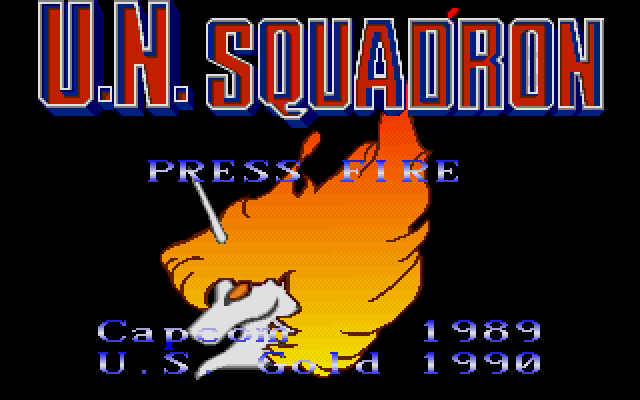
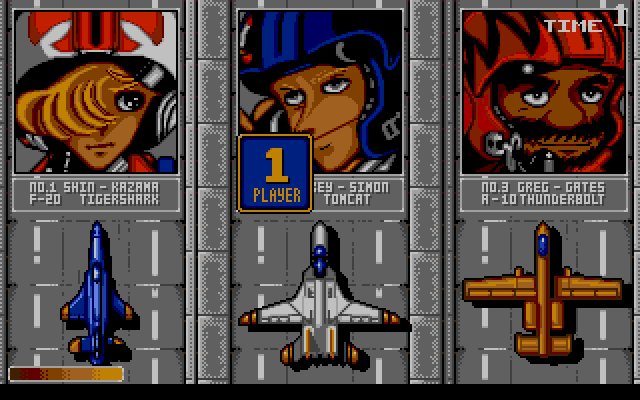
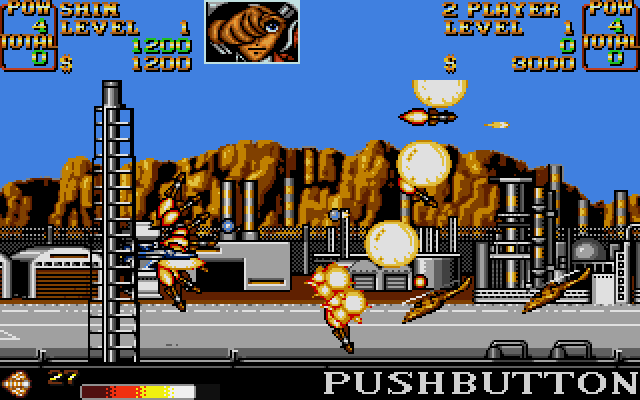
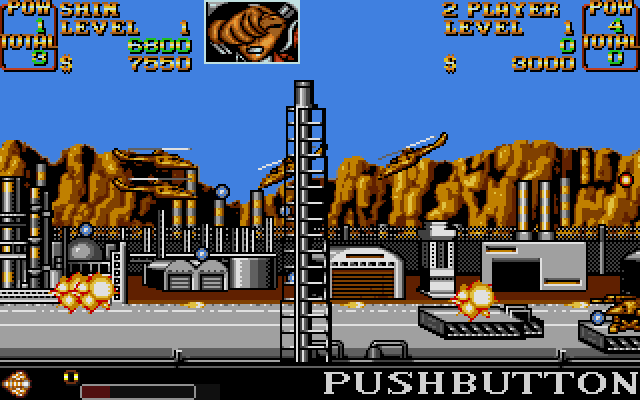
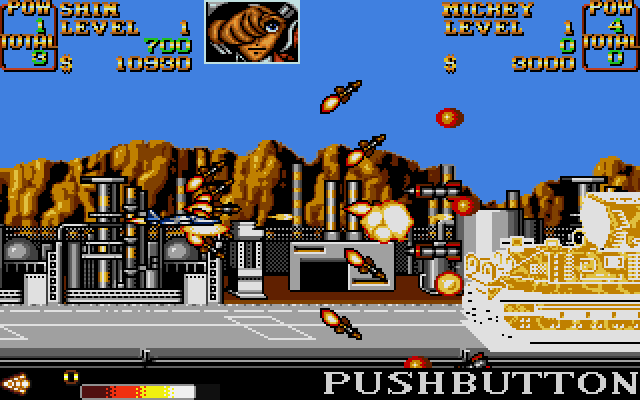
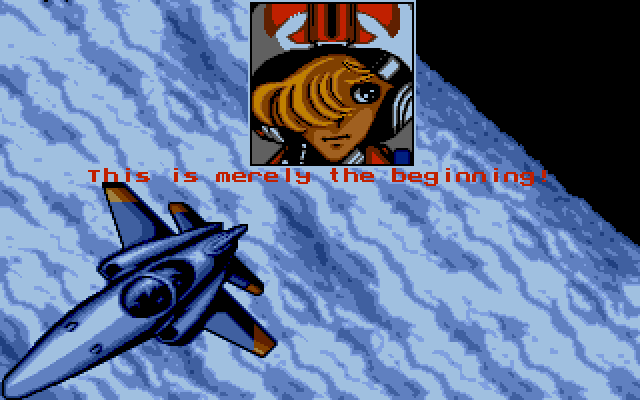
All right, that's all I have for you this week, and for ST-urday. I hope you all enjoyed this feature: I realize the Atari ST isn't everyone's area of interest, but it's an odd thing to imagine that the Genesis and SNES had strong competition from the home computer market for us younger generations over in Europe. You ask most people and they'd tell you that the home computer libraries of the late 80s and early 90s before the likes of Doom and Quake came along were chiefly serious games for grown-ups like RTS war games, Sierra graphic adventures about doing police paperwork, municipal simulators and dry, incomprehensible, stats-heavy RPGs like Ultima and Might & Magic. Nope. Turns out there were a lot of Arcade ports and other weird action fare on there, as the spirit of the C64's versatility continued on for another computer generation before they all more or less ceded the non-FPS action genres to the consoles (and then took them back with the advent of Steam, but that's a tale for another occasion).
Thanks to anyone who gave this goofy little feature their time and I hope I managed to convey even a fraction of my undying admiration and appreciation for the Atari ST. It was a footnote in gaming history to most, but to me it was a treasure and the start of something wonderful: a lifelong passion for video games.
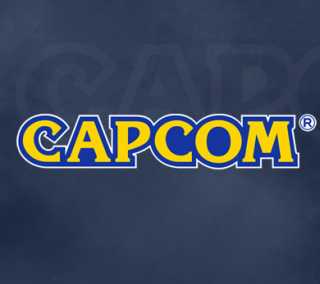
Log in to comment